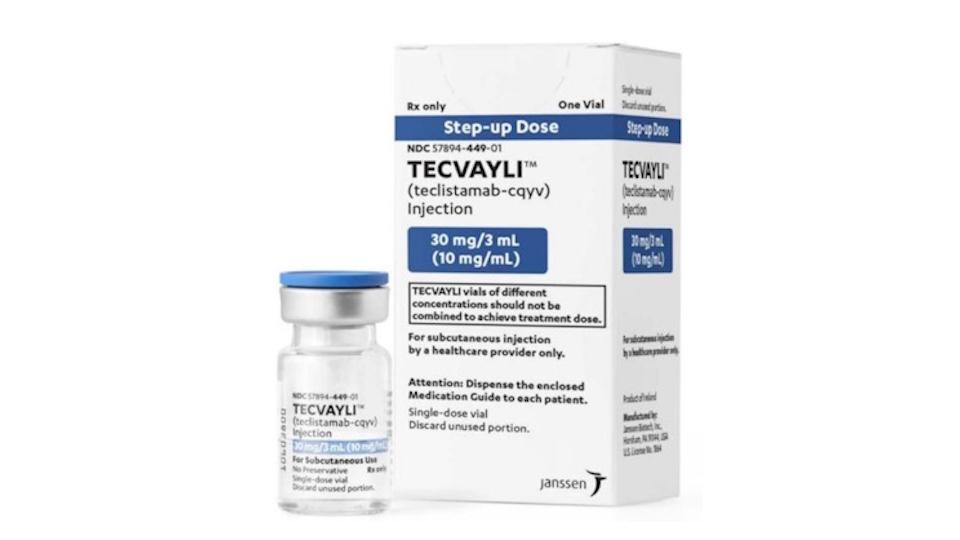The future of multiple myeloma is personalised, but we must work together to deliver it

It’s true that we’ve come a long way in recent years when it comes to treating multiple myeloma. More therapies are being developed, to the point where somebody diagnosed now is likely to have several treatment options available that didn’t exist 20 years ago.
But the inescapable reality is that myeloma remains an incurable condition, which, while relatively rare compared to some other cancers, still affects far too many.1 Prevalence has gone up globally, increasing by 126% between 1990 and 2016.2
There is also the challenge that myeloma becomes harder to treat with each relapse, and with each therapy administered. For example, if a patient relapses after receiving three different treatments, their life expectancy will reduce to less than 10 months.3 For the 24,000 people living with multiple myeloma in the UK, that’s a horrifying statistic, and those of us working in the field must work quickly to improve this outlook and help to create a future where no myeloma patient runs out of options.4
The need for personalised solutions
The overarching issue is that patients need more innovative, personalised therapies that target myeloma in different ways.
We know that myeloma cells are highly heterogeneous. They multiply in an uncontrolled way, secrete a variety of immunoglobulins, and can be produced by several genetic mutations that may be different in each patient.5 That’s why myeloma cells are something of a ‘moving target’, with no one-size-fits-all treatment approach.
The way forward, then, is to deliver truly personalised medicines and care. For industry, this means developing therapies that are tailored to individual disease characteristics – something that will be key to overcoming treatment resistance.
As for many challenges that face us, the key to delivering this in practice is to work together. We need to share learnings, knowledge and data, and foster collaboration, rather than innovating in siloes.
Diversifying clinical trials
Delivering more personalised therapies starts right at the beginning of the R&D lifecycle. If we want to develop drug candidates that target individual disease characteristics, then we need to ensure clinical trials represent the diverse myeloma patient populations. But real-world representation in clinical studies won’t happen unless we share responsibility for getting there.
A 2022 paper found that non-White patients had lower representation in UK early-stage multiple myeloma trials compared to the expected prevalence of the condition.6 These differences were mostly observed for Black patients.6
The pressing question here is ‘what’s behind this?’. The International Myeloma Foundation offers several possible reasons for this ethnic disparity, including systemic racism, the level of sensitivity to diversity shown by healthcare professionals, and negative experiences with health interventions in the past.7
To address this, I believe that we (and by that, I mean all pharma companies, professional bodies, healthcare professionals, providers, patient advocacy groups, and clinical trial sponsors working in multiple myeloma) need to agree concrete, actionable steps to make myeloma trials more representative. This includes ensuring clinical trial recruitment is accessible by engaging intended patient populations early on, training healthcare providers and researchers to recognise and address unconscious bias, and ensuring that underserved patients don’t experience any barriers during the clinical study that might further embed caution or cause them to have a negative experience. These could be issues like logistical difficulties with transport, or language barriers between patients and clinical staff.
Crucially, we need to hold each other accountable for implementing these measures, and continually review them. Last year, for example, Johnson & Johnson set up the Global MM Collaboration Council, and I believe if this pooling of expertise became the norm, we could make a great difference to the representation and applicability of myeloma research.
Generating real-world evidence
With that said, we also need to remember that truly personalised care for myeloma patients depends on real-world evidence as much as it does clinical research.
The advancement we’ve seen in myeloma treatment over the past few years is a huge step, but such fast-paced innovation can mean that evidence generated in the real-world doesn’t always reflect that of clinical trials (which, as we know, can often be misrepresentative of the treatment population).8
The way I see it, the path to addressing this gap is two-fold: first, we need to generate more real-world evidence that represents the varying characteristics of myeloma patients, and how they respond to treatment. A good place to start is by agreeing a standardised process for collecting and reporting real-world outcomes in both pre- and post-approval treatment settings.9
Secondly, we need to ensure that health technology appraisal (HTA) and regulatory bodies are equipped (and willing) to adequately assess real-world evidence in their decision-making. For treatments with a smaller patient population, as is the case for many myeloma therapies, reliance on clinical data isn’t enough, often because HTA bodies’ methods don’t consider it sufficiently robust. For personalised, targeted therapies for myeloma to become accessible to those who need them, assessment methods must be reformed and standardised to ensure evaluations of treatments’ effectiveness are informed by real-world evidence.
Embedding patient needs into R&D
When I think about how to make myeloma care more personalised, the common thread is acknowledging patients’ needs. My career to date has meant that I’ve seen first-hand the value of early integration of patient perspectives into the R&D lifecycle. For me personally throughout my career, as well as at Johnson & Johnson, my approach has always been more than just early engagement with the patient community and advocates. It has to be a real partnership, working in sync to conceive and then design the trial together. It’s more than just including the right patient-reported outcomes; it’s the dosing schedule, the number of hospital visits, the tolerability of different modalities, and the ability for patients to then adopt a therapy in the real world – is it feasible, practical, and useful to patients, as well as providing clinical endpoints in the trial itself?
For myeloma therapies to reflect the needs of their intended patients, I think it helps for the people working in drug development and delivery to think back to what led us to our careers in the first place – a passion to improve outcomes for patients – and let that be the driving force to work together. What will we be most proud of during our opportunity to help patients when we look back in years to come? It’s a case of recognising our privileged position, stepping back and thinking to ourselves, ‘All of these learnings… are we sharing them? Are we discussing what we know about patient experiences across every single team and function?’. If not, we need to ask ourselves ‘Why not?’ and take steps to put the patient view front and centre of every decision we make.
References
- Cancer Research UK. Cancer incidence for common cancers. Available at https://www.cancerresearchuk.org/health-professional/cancer-statistics/incidence/common-cancers-compared. Last accessed September 2024.
- Cowan AJ, Allen C, Barac A et al. Global Burden of Multiple Myeloma: A Systematic Analysis for the Global Burden of Disease Study 2016. JAMA Oncol. 2018;4(9):1221-1227.
- Popat R et al. Comparative efficacy of teclistamab versus pomalidomide plus dexamethasone for patients with triple-class exposed relapsed refractory multiple myeloma in England. 2024 European Haematology Association Annual Meeting. 13 June, 2024.
- Myeloma UK. What is myeloma? Available at https://www.myeloma.org.uk/understanding-myeloma/what-is-myeloma. Last accessed September 2024.
- Dima D, Jiang D, Singh DJ et al. Multiple Myeloma Therapy: Emerging Trends and Challenges. Cancers (Basel). 2022;14(17):4082.
- Asher S, Kazantzi A, Dekaj F et al. Under-representation of ethnic minorities in early phase clinical trials for multiple myeloma. Haematologica. 2022;107(12):2961-2965.
- International Myeloma Foundation. Diversity in Clinical Trials. Available at https://www.myeloma.org/clinical-trials/diversity-clinical-trials. Last accessed September 2024.
- AJMC Peer Exchange. Role of Real-World Evidence in the Evolving Treatment Landscape of Multiple Myeloma. Available at https://www.ajmc.com/view/role-of-real-world-evidence-in-the-evolving-treatment-landscape-of-multiple-myeloma. Last accessed September 2024.
- Benjamin A, Derman, AJ, Battiwalla M, Hamadani M, Kansagra A, Lazarus HM, Wang C. Reality check: Real-world evidence to support therapeutic development in hematologic malignancies. Blood Reviews. 2022;53:100913.













